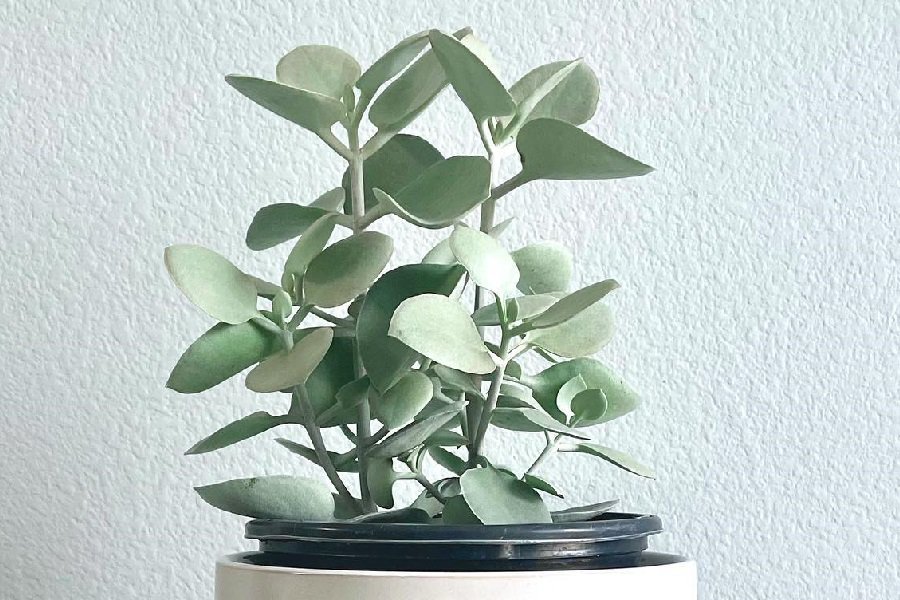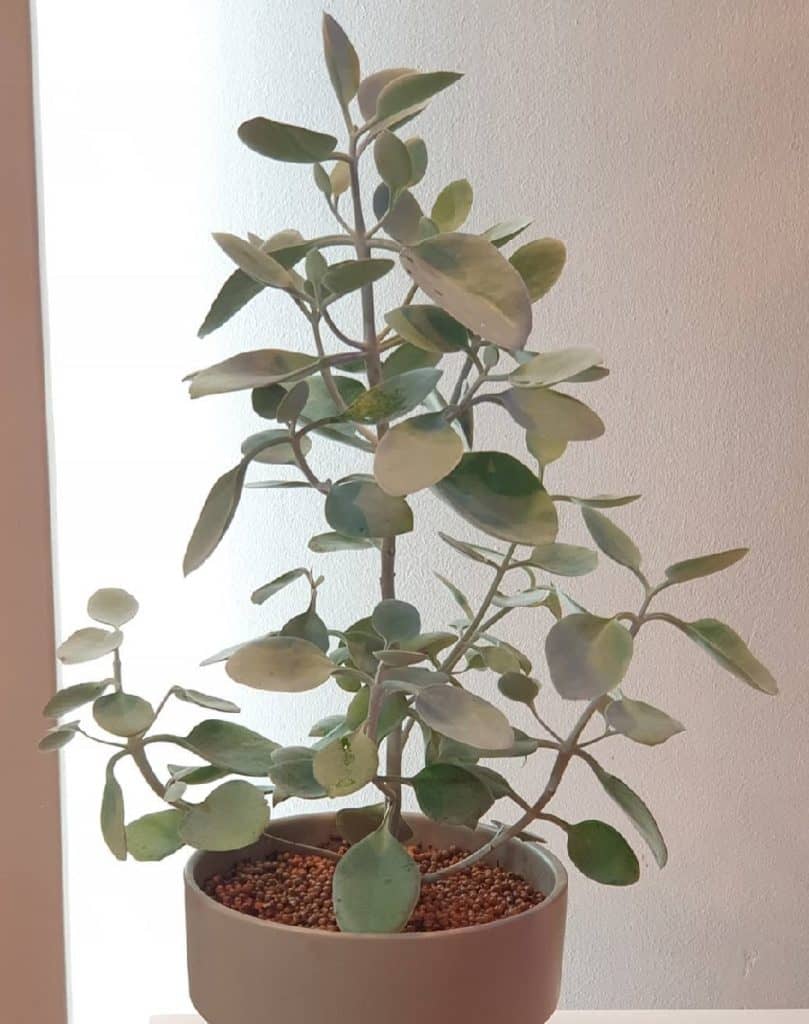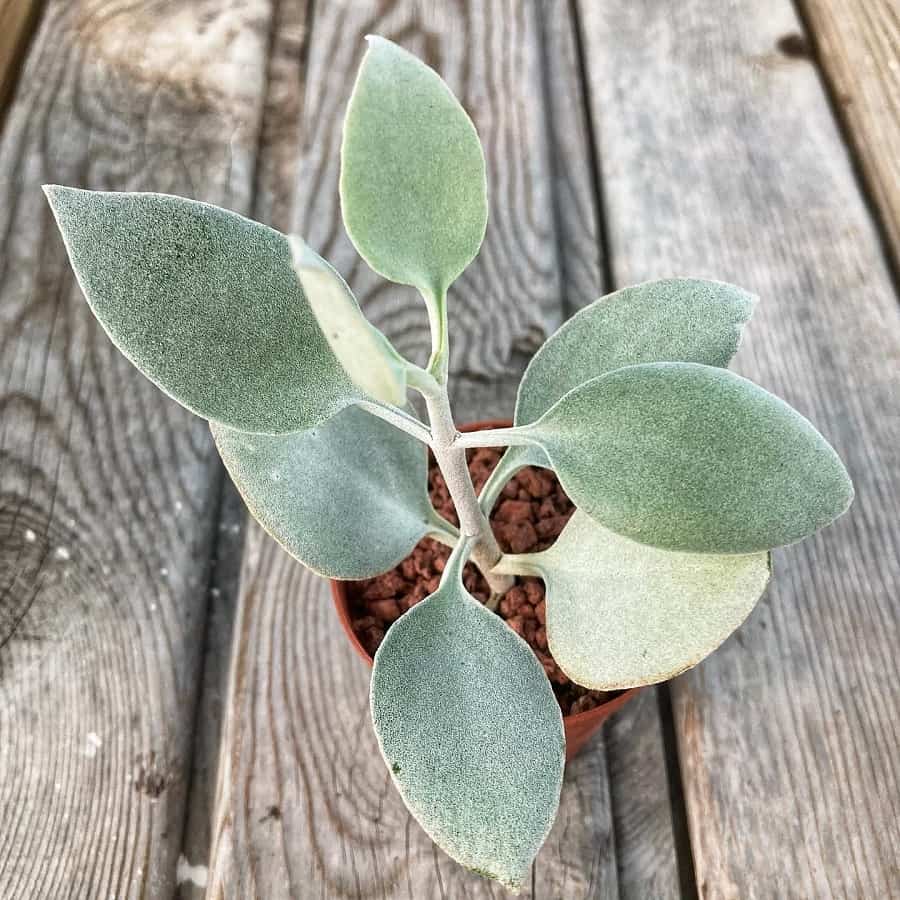Kalanchoe bracteata: Characteristics and Care
Are you looking for a funky, low-maintenance plant to brighten up your space? Meet the Kalanchoe bracteata, also known as the “silver teaspoons” plant! With its quirky silvery-green leaves and vibrant orange-red flowers, this succulent is guaranteed to be a conversation starter. But here’s the best part – it’s virtually indestructible! Even plant killers can keep this hardy guy alive and thriving. Let’s dive into everything you need to know about caring for your new favorite houseplant.

Contents
About Kalanchoe Bracteata
Native to the island of Madagascar, the Kalanchoe bracteata is a small shrubby plant that typically grows up to 4 feet tall. Its thick, oval-shaped leaves are coated in a whitish, waxy material that gives them a unique silvery sheen – hence the name “silver teaspoons.” In spring and summer, vibrant clusters of reddish-orange blooms add an extra pop of color. Despite its exotic looks, this plant is a total low-maintenance gem that even beginner gardeners can easily grow indoors or out.
Related Post:
40+ Kalanchoe Lower Classifications With Pictures
How to Care For Kalanchoe Bracteata
Light Requirements
Like most succulents, the silver teaspoons plant craves lots of bright light. A sunny, south or west-facing window is ideal for indoor plants. If you live in a hot climate area, protect it from intense direct rays during peak afternoon hours. Outdoor plants can tolerate full sun in cooler regions but will need filtered shade from scorching midday sun. If natural light is limited, no worries! A grow light set to 14-16 hours per day can keep your silver teaspoons happy indoors.

Water Needs
Mimicking its native arid environment, Kalanchoe bracteata likes infrequent watering and drying out periodically between waterings. Always allow the soil to fully dry out down to 2-3 inches deep before watering again. During winter dormancy, you can cut back on watering even further. Overwatering is a big no-no—soggy soil promotes root rot and other fungal issues. On the flip side, underwatering causes the fleshy leaves to shrivel up and drop off. A good rule of thumb is to water every 2-3 weeks in spring and summer, cutting back to monthly in fall and winter.
Soil
Thanks to their succulent nature, silver teaspoons thrive in a fast-draining potting mix. An ideal mix combines equal parts potting soil, coarse sand or perlite for drainage, and materials like peat moss to retain some moisture. Most premixed cactus and succulent soils work perfectly. Drainage is crucial to prevent soggy soil and root rot.
Fertilizing
Kalanchoe bracteata is light feeder that typically gets sufficient nutrients from a quality potting mix. If desired, you can provide a gentle boost with a balanced liquid fertilizer diluted to 1⁄4 strength during the growing season.

The Perfect Temp
Bring on the heat! Native to tropical Madagascar, Kalanchoe bracteata loves warm to hot temperatures between 65-90°F. It can tolerate cooler temps down to around 55°F but won’t be too happy below that. In cold winter climates, it’s best to grow silver teaspoons as an indoor houseplant or protect outdoor plants with frost cloth when freezing temps threaten.
Potting & Repotting
Kalanchoe bracteata has a relatively small root system and grows slowly, so it doesn’t need frequent repotting. Use a pot just slightly larger than the rootball with plenty of drainage holes. Allow the potting mix to dry out between waterings. Repot in spring every 2-3 years, moving up just 1-2 inch pot size each time and refreshing with new fast-draining succulent soil.
Pruning
These low maintenance succulents rarely require heavy pruning. Simply use clean pruners to snip off any dead, damaged or unsightly leaves or stems as needed. You can also prune lightly to control size and shape. Avoid removing more than 1⁄4 of the plant at once.
Pest Prevention
Luckily, pests are rarely an issue for this hardy plant if its basic needs are met. Be on the lookout for common houseplant pests like mealybugs, spider mites or scale, treating with insecticidal soap or neem oil if any appear. Good air circulation also helps deter most bugs.
Kalanchoe Silver Spoons Propagation
One of the coolest things about silver teaspoons is how easily they propagate from stem or leaf cuttings! Here’s all you need to do:
Stem Cuttings
- Using clean scissors, snip off 3-5 inch stem pieces, making clean cuts just below a leaf node.
- Allow the cuttings to cure for 2-3 days until the cut ends callus over.
- Once calloused, place the cuttings on top of fresh succulent potting mix, gently pressing the base into the soil. Space them 4-6 inches apart.
- Lightly mist the soil around the cuttings whenever it becomes completely dry.
- New roots and growth should appear in 2-4 weeks!
Leaf Cuttings
- Gently twist the fleshy leaves off the stem, keeping the base intact.
- Allow leaf cuttings to dry for 2-3 days until the ends callus over.
- Place the calloused leaf cuttings on top of succulent potting mix, spacing a few inches apart.
- Mist the soil lightly whenever dry, being careful not to dislodge the cuttings.
- Roots and new tiny plants will start growing from the leaf bases in 3-6 weeks.
Once the new baby plants are a few inches tall with roots, you can transplant them into their own containers following the same care guidelines. Voila – more funky silver teaspoons for all your friends! Isn’t propagation amazing?
